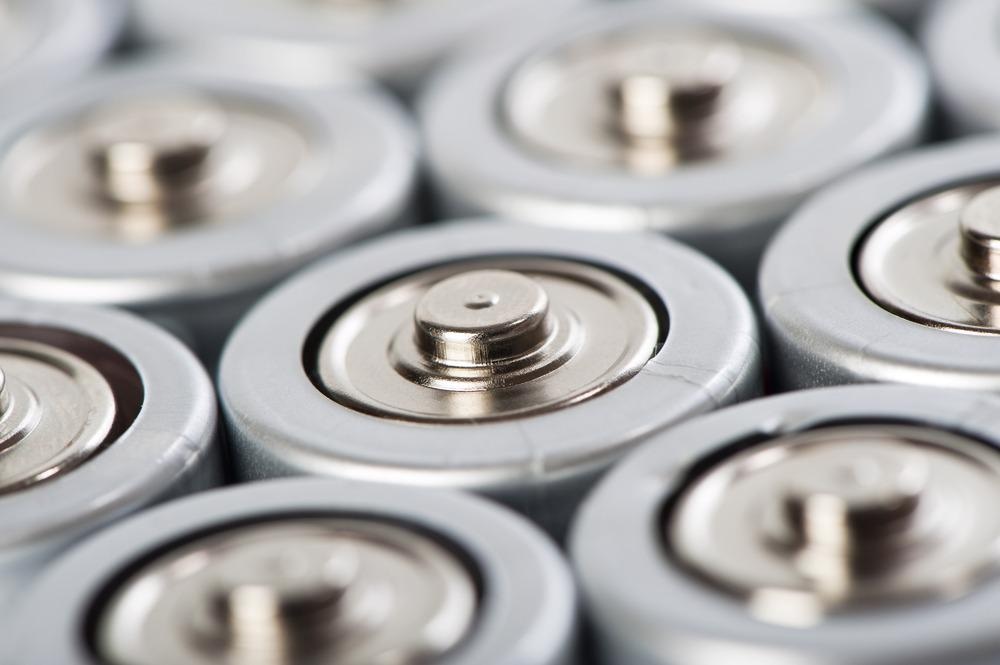The creation of unique sea urchin-like SmMn2O5/ MnO2 for effective catalysis of the oxygen reduction reaction (ORR) is the subject of a recent study published in the journal Materials Research Bulletin.

Study: Efficiently catalyzed sea urchin-like mixed phase SmMn2O5/MnO2 for oxygen reduction reaction in zinc-air battery. Image Credit: art nick/Shutterstock.com
The sea urchin-like SmMn2O5/ MnO2 regenerative zinc-air fuel cell not only has a remarkable total energy density but also has outstanding cycling durability of 450 hours in long-term charging-discharging measurements.
Significance of Zinc-Air Batteries
With the growing degradation of conventional energy sources, it is imperative to investigate renewable and sustainable energy solutions to address the power scarcity issues and associated environmental pollution issues.
Metal-air battery packs are regarded as one of the most sophisticated energy storage devices, gaining a lot of interest because of their remarkable power density and financial stability.
Because of its excellent safety and ideal power output, the zinc-air battery (ZAB) offers a lot of promise for improvement in battery technology. ZAB uses ORR to generate power between the zinc flakes on the positive terminal and the oxide catalyst on the negative terminal.
Limitations of Traditional Catalysts
The oxygen evolution reactions (OER) and oxygen reduction reactions (ORR) in zinc-air battery packs are often catalyzed by platinum and Ru-based catalyst supports. However, the expensive cost of these catalysts prohibits the widespread usage of these compounds.
The discovery of abundant and low-toxicity terminal components with strong catalytic capabilities on the surface of the planet will be critical in enabling ORR to replace precious metal catalysts in high-performance metal-air and fuel cells, as well as in high-performance metal–hydrogen fuel cells.
Manganese-based Mullite-type Oxide Catalysts
Due to their enormous deposits on the planet, financial benefits, and extensive surface shape and degree of crystallinity, manganese-based mullite-type oxides (SmMn2O5) are believed to be a highly promising form of accelerator that may substitute platinum-based catalysts.
There are different crystal domains in manganese-based mullite: the pyramidal with Mn3+ as the core and the octahedron form with Mn4+. The free-electron occupancy of the dz2 orbit at the Fermi level, which is the foundation of the ORR function, is satisfied by the pyramidal type Mn3+; the cohabitation of the crystal lattice causes changes in the surface polarity and electrical structural adjustability.
Enhancing Catalytic Performance of ORR
In past research, the efficiency of the catalysts was improved by regulating the shape of oxygen-containing functional groups, metal ion dosing, and combining them with graphene sheets.
To enhance the electrocatalytic activity of the pure-phase crystalline phase SmMn2O5, light treatment was formerly utilized to enhance the number of available oxygen vacancies.
To improve ORR effectiveness, increasing the quantity of charge transport and oxygen vacancies on the SmMn2O5 interface is, therefore, a viable option.
In this work, the researchers used a customizable aqueous approach to make sea urchin-like SmMn2O5/ MnO2 nanoparticles.
The involvement of MnO2 and comparable sea urchin tips is methodically clarified in conjunction with the experimental data of single-crystalline mullite, and the effectiveness of the SmMn2O5/ MnO2 catalyst for ORR is evaluated in detail using half-cell measurements in alkaline solution, which includes half-wave potential, electron carrier effectiveness, cyclability, and low toxicity.
The research not only presents a variety of low-cost, high-activity electrocatalytic materials for ZAB but also a convenient and straightforward approach for a broad range of ZAB applications.
Conclusion and Prospects
The electrocatalytic properties of SmMn2O5/ MnO2 are superior to those of the crystalline phase SmMn2O5, and the half-wave voltage and quantity of transported electrons are larger, as is the hydrogen peroxide production when compared to the pure phase SmMn2O5.
This is mostly due to the presence of oxygen vacancies due to the decrease of additional Mn4+ into reactive pyramid Mn3+, which results in the creation of more reactive groups for the oxygen reduction process.
Furthermore, the sea urchin-like tip is favorable to the build-up of electric charge, ensuring that the ORR is continually supplied with an electric charge. When comparing the current density of ZAB constructed by these catalysts to that of platinum catalysts, SmMn2O5/ MnO2 exhibits a higher maximum peak density of 175.28 mA cm-2 and longer cycle durability of 450 hours.
In this study, it was discovered that SmMn2O5 with more oxygen-containing functional groups and pyramidal Mn3+ is a highly promising material for the construction of high-efficiency ZABs.
Continue reading: How Nanotechnology Can Improve Vanadium Flow Batteries.
Reference
Yun-long Zhang. et al. (2022). Efficiently catalyzed sea urchin-like mixed phase SmMn2O5/MnO2 for oxygen reduction reaction in zinc-air battery. Materials Research Bulletin. Available at: https://www.sciencedirect.com/science/article/abs/pii/S0025540822000186
Disclaimer: The views expressed here are those of the author expressed in their private capacity and do not necessarily represent the views of AZoM.com Limited T/A AZoNetwork the owner and operator of this website. This disclaimer forms part of the Terms and conditions of use of this website.